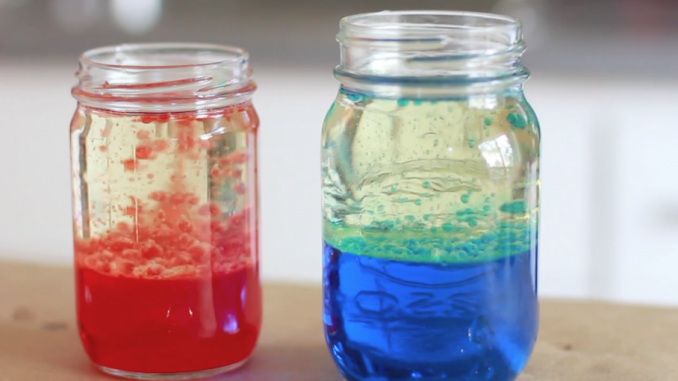
Lara Murray-Sterzel | Staff Writer
There’s nothing like a good science activity at the end of the day to improve your mood. Oneonta’s Bio Club held a meeting on Tuesday, Sep. 20, where the group created their own lava lamps. The event was hosted by club President Thomas Stritzl, Vice President Jazmine Reyes, Secretary Alyxis Szary, and Treasurer Joseph Clark who provided the materials needed to create the lava lamps.
After the successful Club Expo on Sep. 18, the Bio Club was very excited to start their upcoming activities and get students involved with their club. The president began the meeting by introducing new and returning members. When introductions were over, they provided students with instructions on how they were going to make the lava lamps.
The materials were put on the lab table at the bottom of the classroom with assistance from members of the club. The first step was fill a third of a mason jar with water and the rest with oil. Then put two or three drops of food coloring in the jar. The final step was to break the Alka-Seltzer in half and put it in one half at a time. Students watched in amazement as their jars began to bubble and transform into real lava lamps. But how is this possible? How can a little bit of water and a splash of oil create a small lava lamp? According to President Thomas Stritzl, the oil is hydrophobic which means it doesn’t mix with water molecules when in the jar. But when the Alka-Seltzer is placed in the jar, there’s a reaction with the water molecules producing a chemical called carbon dioxide, the chemical that rises to the surface. When the carbon dioxide bubble pops, the water molecules die down due to the water being denser than the oil.
“It’s a fun, easy experiment to kick off our club with, especially after all the new members joined after the Club Expo. And it’s just simple. Hydrophobic and hydrophilic qualities of liquids and lipids is something that most biology majors do learn from high school,” said their president when asked why they choose to have a lava lamp event. The club revealed that they’ve done this experiment in the past and it gets a lot of students to come out. When asked if this experiment is better performed at home or in a lab, President Thomas Stritzl surprisingly said it’s more of an at-home experiment. “I’d say that it’s pretty safe and all those things that we use are pretty safe for home. So, I’d say you can do it at home.” The Bio Club strongly encourages students to join their club regardless of their majors.
Leave a Reply